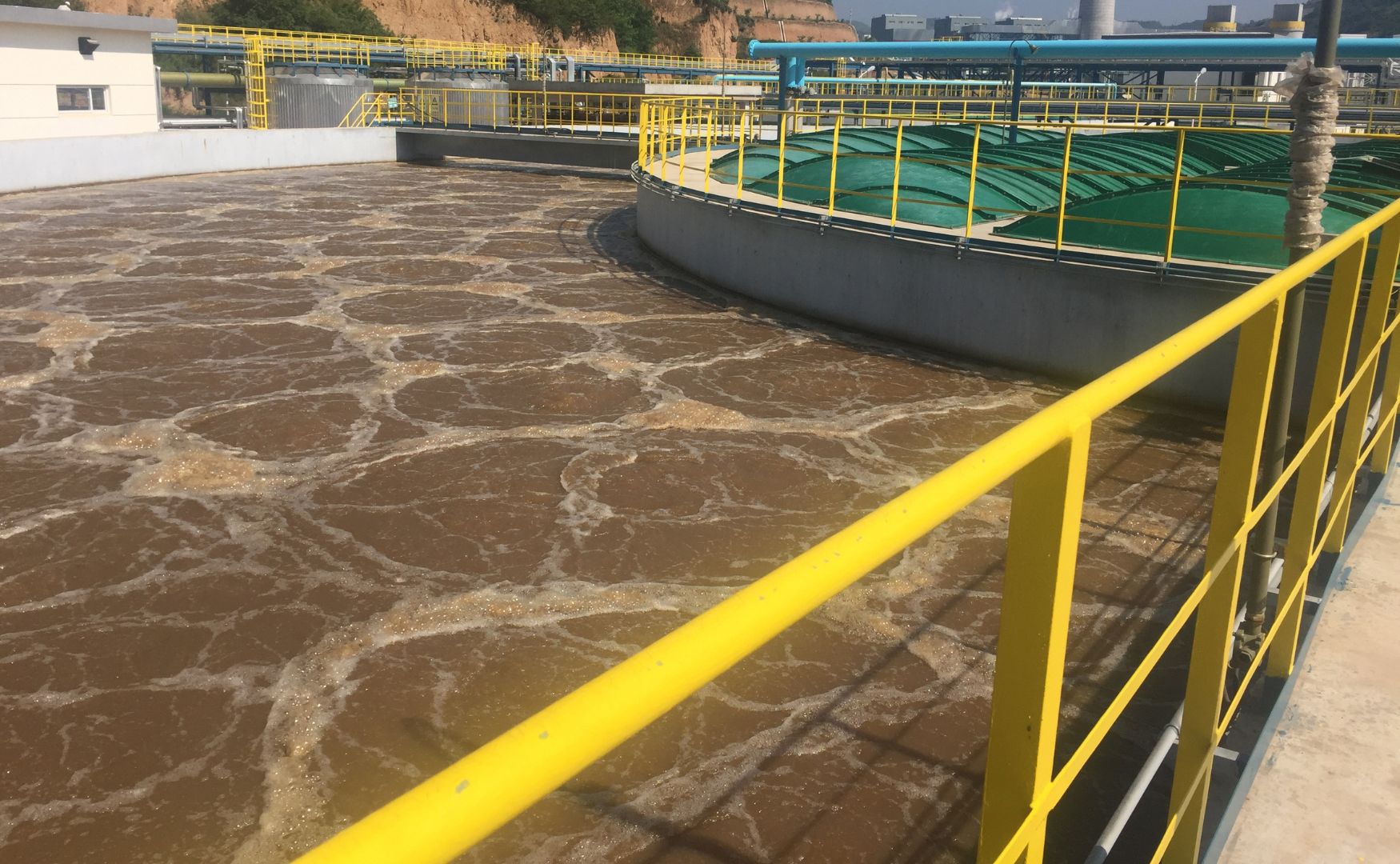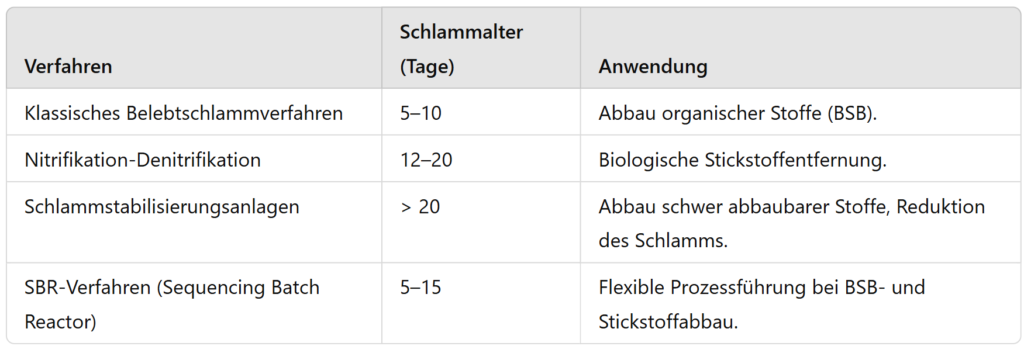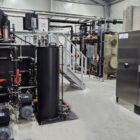The sludge age, also known as sludge residence time (SVZ) or mean cell residence time (MCRT), describes the average residence time of the biological biomass (microorganisms) in an aeration tank. It indicates how long the microorganisms remain in the activated sludge system before they are discharged as excess sludge. The sludge age is a central control parameter in biological wastewater treatment, especially in the activated sludge processas it strongly influences the microbial processes, the composition of the biomass and the degradation efficiency.
Table of contents
Importance of sludge age in practice
Process control in biological wastewater treatment:
- The sludge age determines the composition of the microorganism population in the aeration tank.
- A low sludge age promotes the growth of fast-growing, easily degradable microorganisms.
- A high sludge age favors the degradation of organic compounds that are difficult to break down and nitrification by slow-growing bacteria such as Nitrosomonas and Nitrobacter.
Optimization of cleaning performance:
- The efficiency of organic degradation and nitrogen removal depends directly on the age of the sludge.
- A well-controlled sludge age ensures stable process control and compliance with legal limits.
Sludge production:
- The sludge age influences the amount of excess sludge that accumulates in the plant.
- A higher sludge age leads to lower excess sludge production, as more biomass is broken down internally.
Calculation of the sludge age
The sludge age is calculated as the ratio of the biomass present in the system to the biomass removed daily. It indicates how many days a biomass particle remains in the activated sludge system.
Sludge age = mass of biomass in the aeration tank (kg DM) / daily sludge removal (kg DM/d)
- DM: dry matter of the biomass.
- Unit: Days.
Influence of sludge age on biological wastewater treatment
Organic degradation (BOD degradation)
- A sludge age of 2-8 days is generally used for the degradation of easily degradable organic substances (biochemical oxygen demand, BOD).
- With low sludge age:
- Rapid growth of heterotrophic microorganisms.
- Higher excess sludge production.
Nitrogen removal (nitrification and denitrification)
- Slow-growing nitrifying bacteria are required for complete nitrification, which requires a longer sludge age (usually 12-20 days).
- High mud age:
- Promotion of Nitrosomonas (ammonium oxidation) and Nitrobacter (nitrite oxidation).
- Improved nitrogen elimination in combination with denitrification zones.
Phosphorus removal
- Biological phosphorus removal requires the promotion of polyphosphate-accumulating organisms (PAOs), which develop optimally at a moderate sludge age (approx. 5-10 days).
Removal of substances that are difficult to break down
- Slow-growing bacteria and fungi that can break down complex or toxic organic compounds require a high sludge age (> 20 days).

Photo: Activated sludge tank of our ALMA BHU BIO process
Operational optimization of the sludge age
Determining and controlling the sludge age is a central aspect of operational management in biological wastewater treatment plants. Various measures can be used to optimally adjust the sludge age:
Excess sludge discharge
- The removal of excess sludge is the primary control mechanism for the sludge age.
- An increased sludge removal rate reduces the sludge age, while a lower removal rate increases the sludge age.
Return sludge control
- The return sludge contains a high concentration of active biomass and therefore influences the sludge age.
- An increase in the return rate can stabilize the sludge age.
Influence of temperature
- Higher temperatures accelerate the growth of microorganisms and require a lower sludge age.
- At low temperatures (e.g. in winter), a higher sludge age is required to maintain biological activity.
Load fluctuations
- Fluctuations in the organic load (BOD, COD) or the nitrogen concentration require an adjustment of the sludge age in order to ensure process stability.
Problems with incorrect sludge age
If the sludge age is not set optimally, this can lead to considerable problems during operation:
Sludge age too low
- Insufficient decomposition of organic substances and poor cleaning performance.
- Inhibition of nitrification, as slow-growing nitrifying bacteria cannot be sufficiently established.
- Increased excess sludge production, which leads to higher disposal costs.
Sludge age too high
- Reduced biomass activity due to ageing of the microorganisms.
- Risk of filamentous bacteria growth, which leads to poor settling properties of the sludge (bulking sludge).
- Accumulation of poorly degradable organic substances and toxic substances.
Examples of sludge ages in practice

Conclusion
The sludge age is one of the central control variables in biological wastewater treatment. It directly influences the treatment performance, the composition of the biomass and the excess sludge production. An optimally adjusted sludge age ensures efficient wastewater treatment and minimizes operating costs and environmental pollution. Continuous monitoring and adjustment of the sludge age is therefore essential to ensure stable and effective process control.
For further information on our products, please feel free to contact us at any time!








